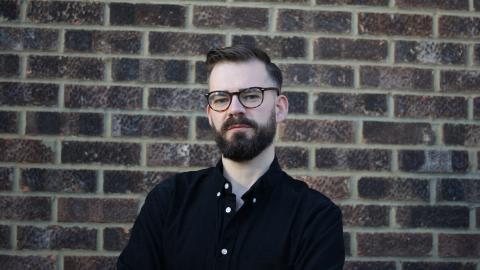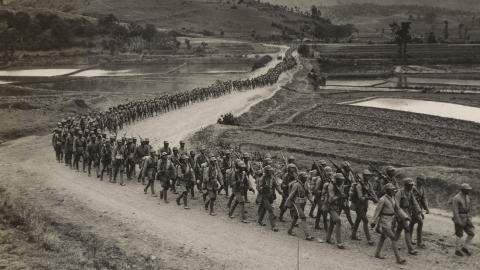On 7 October 1944, the inhuman tyranny of Auschwitz was suddenly challenged in the most astounding way. A group of prisoners, known as the Sonderkommando, fought back against the SS, in an act of rebellion that shocked their complacent captors. So just what was the Sonderkommando, and how did they orchestrate their uprising?
The Sonderkommando
In a place that was as close to Hell as anything that has ever existed on Earth, the men of the Sonderkommando inhabited their own special circle of anguish. They weren't just prisoners – they were forced to assist in the mass killings of other prisoners. Largely made up of Jews, the Sonderkommando were men deemed fit and able enough to help the Nazis process new arrivals – shepherding them from the trains, giving them false reassurance, leading them to the gas chambers and disposing of the mountains of corpses in the crematoria. Some of these corpses were of their own friends and relatives.
They had no say in the matter – their choice was either to do as they were told, or face a swift execution themselves. It was a queasy, morally sickening position to be forced into – particularly as the men of the Sonderkommando were granted special privileges like better (or at least, less disgusting) living quarters, more food and "perks" like cigarettes and medicines. They were also less likely to be arbitrarily gunned down just because a Nazi officer felt like it.
The sense of being forced into being "collaborators" was too much for the men to bear. One Sonderkommando prisoner who would survive the genocide, Filip Muller, later recounted how he his crushing feeling of guilt led him to follow one group of prisoners right into the gas chamber. As he put it, one of the girls in the doomed group stopped him, saying "We must die, but you still have a chance to save your life. You have to return to the camp and tell everybody about our last hours… They ought to fight, that's better than dying here helplessly."
Of course, death for the Sonderkommando was still inevitable – it was simply postponed. Their slave labour meant they knew the truth of the camp and the industrialised slaughter taking place there. That in turn meant they had to be regularly slaughtered themselves, to make way for a new "generation" of Sonderkommando. It was the 12th generation who would rise up against their cruel masters.
The October revolt
The Sonderkommando uprising wasn't some spontaneous outburst of anger against the SS. It was a carefully thought-out plan that overcame incredible logistical odds. And some of the key players were female Jewish prisoners working in a munitions factory within the sprawling Auschwitz complex.
In the months leading up to October, these women had painstakingly smuggled gunpowder from the factory to the secret resistance movement within the Sonderkommando. They used ingenious techniques, like hiding the tiny packages of powder in the false bottoms of food trays, and even in the nooks of corpses being sent to the crematoria. All the while enduring the nerve-jangling possibility of being found out.
The gunpowder was used by the Sonderkommando to create makeshift bombs and grenades. This careful preparation came to a head on 7 October, when – during a roll call – one of the prisoners calmly walked up to a Nazi officer and with a triumphant "Hurrah!" struck him with a hammer.
What followed was chaos, as the SS found themselves attacked on all sides by prisoners brandishing hammers, knives and explosives. According to accounts, one SS guard noted for his extreme sadism was nonchalantly thrown into a crematorium oven alive. Some of the prisoners also cut their way through the barbed wire to flee into the woods, while the SS opened fire with machine guns.
It was a brief, delicious taste of vengeance for the Sonderkommando, killing three SS men and injuring around a dozen. But, inevitably, the Nazis crushed the revolt. The escaped prisoners were recaptured and executed. Hundreds of Sonderkommando prisoners were massacred, as were the brave women who helped them.
But, despite all of this, some knew that the tide would turn again some day, and this time for good. A month after the revolt, and weeks before his own death, a Sonderkommando prisoner called Chaim Herman wrote a message for his family, and closed it with these words:
"I am sending you my last farewell forever, these are my last greetings, I embrace you most heartily for the last time and I beg you once more, do believe me that I am going away calmly, knowing you are alive and our enemy is broken."
















